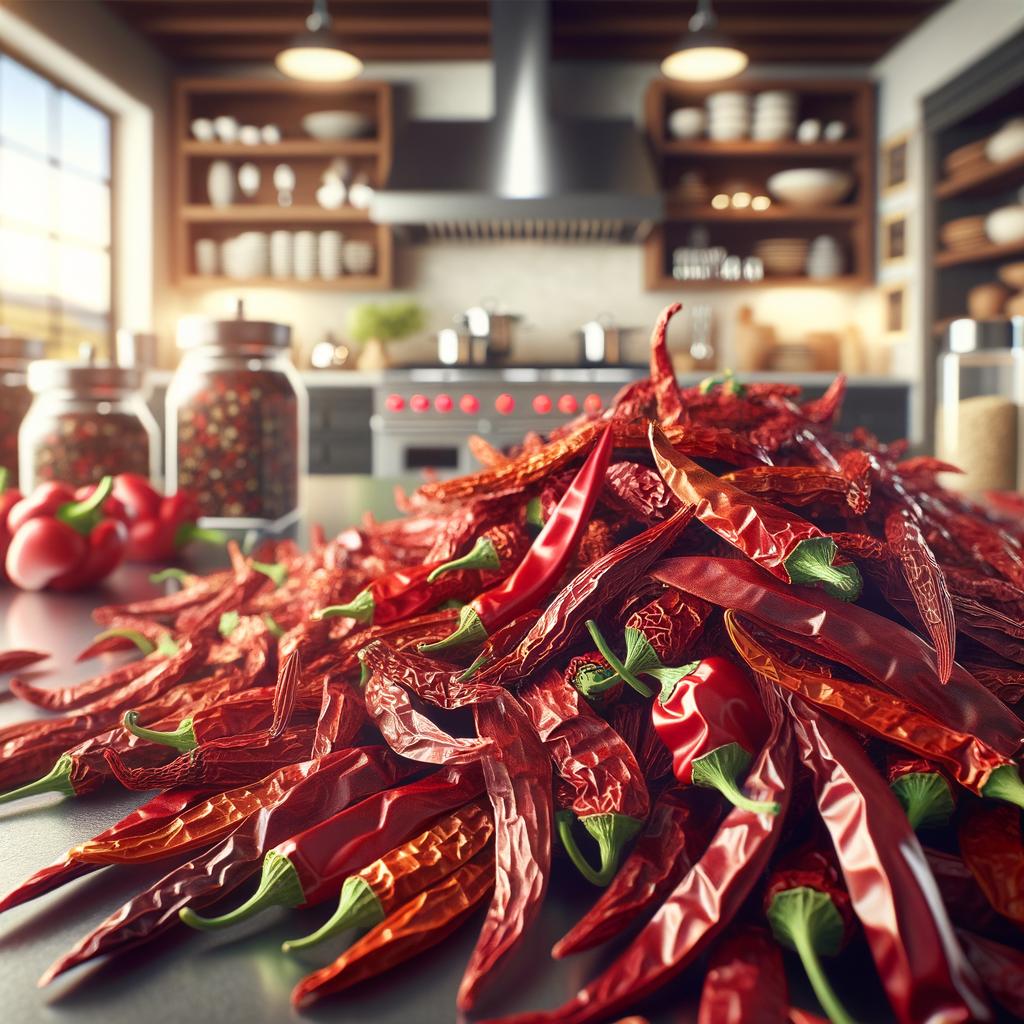Dried Red Chili Peppers

Description
Dried red chili peppers, the fiery jewels of the culinary world, are a sight to behold. They come in a variety of shapes and sizes, from the tiny but potent bird's eye chili to the larger, smoky chipotle. The peppers, once vibrant and plump, are transformed through the drying process into wrinkled, darkened versions of their former selves. Yet, they retain a captivating beauty, their skin a tapestry of deep reds and browns. Their texture is leathery and tough, a stark contrast to the soft, juicy flesh of their fresh counterparts. The flavor profile of dried red chili peppers is complex and layered. They bring not only heat, but also a depth of flavor – smoky, sweet, and sometimes even fruity. The heat level varies greatly, making each type of dried red chili pepper a unique culinary adventure.
Primary Uses
Dried red chili peppers are truly versatile and are used in a myriad of dishes across the globe. They are a staple in Mexican cuisine, where they are rehydrated and ground into a paste for mole sauces, or steeped in soups and stews to impart their fiery flavor. In Asian cuisine, they are often crushed and used in stir-fries, or infused in oils. They are also a key component in Indian spice blends like garam masala. Beyond the culinary world, dried red chili peppers are used in traditional medicine for their analgesic properties and cultural rituals for their symbolic representation of protection and prosperity.
History
The history of chili peppers is as rich as their flavor. They were first cultivated in Mexico over 6,000 years ago and quickly became an integral part of the local cuisine and culture. Christopher Columbus introduced chili peppers to Europe, where they were initially used as a decorative plant before their culinary potential was realized. The Portuguese traders then spread them to Asia and Africa, forever changing the flavor profiles of these continents. Over time, the popularity of chili peppers has only grown, with different cultures adopting and adapting them into their cuisines. There's a romantic tale about an Indian king who insisted on having a dish with chili peppers at every meal, believing they were aphrodisiacs.
Nutritional Information
Despite their fiery reputation, dried red chili peppers are packed with nutritional benefits. They are an excellent source of Vitamin C, even in their dried form, which aids in immune function. They also contain Vitamin A, essential for eye health, and capsaicin, which has been found to have anti-inflammatory and antioxidant properties. The heat from the peppers can also boost metabolism, aiding in weight loss. However, they should be consumed in moderation as excessive consumption can lead to gastrointestinal discomfort. Compared to fresh chili peppers, their dried counterparts contain a higher concentration of nutrients due to the reduced water content, making them a potent addition to any dish.

